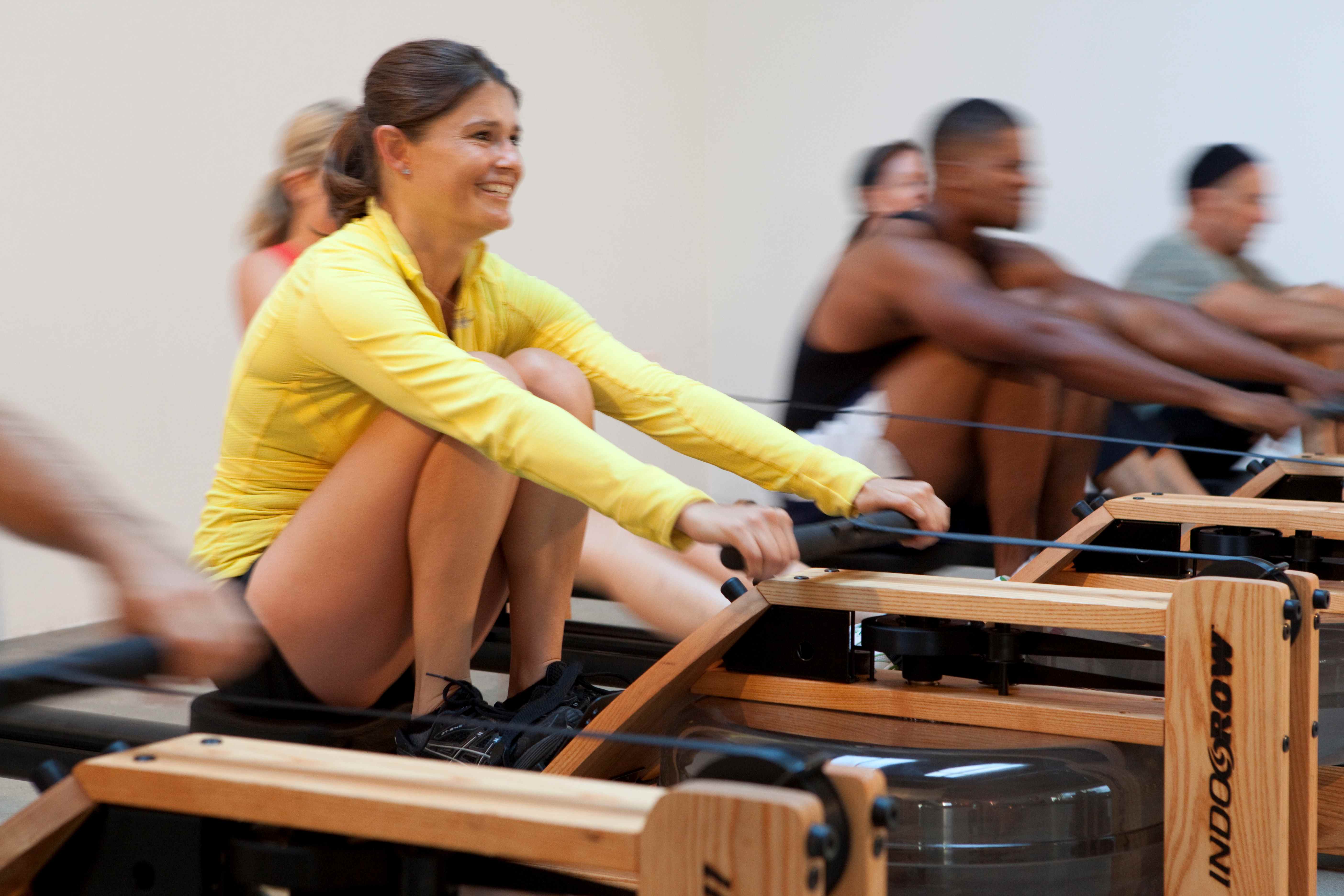Rowing for Your Health

Orange Theory™, CrossFit™ and various gyms and training studios incorporate rowing into their fitness programming. What’s all the hype about? There’s a good reason why it’s a staple in many workouts.
Benefits Associated With Indoor Rowing:
 Improve your cardiovascular fitness and aerobic endurance.
Improve your cardiovascular fitness and aerobic endurance.
Provides a full body workout and will strengthen your legs, upper body, and core.
Will change your body composition and will help you tone and lose body fat.
Provides a low-impact workout.
Multi-level workout allowing for a gentle to high intensity workout.
Burns approximately 400-600 calories per hour.
Help reduce stress, anxiety, and depression.
Increase energy, focus, memory, and self-confidence and improve your sleep.
Rowing seems easy enough. Sit down and start rowing. However, there are several critical technique tips to assure ideal mechanics and reduce your risk for injury.
Rowing Biomechanics:
Rowing involves 2 phases, the work or the drive phase and the recovery or rest phase. Ultimately, you want the rowing stroke to be smooth between these 2 phases.
Starting Position:
Sit down on the rowing machine and strap your feet into the footholds and hold the rowing handle. Bend forward slightly at the hips while keeping your spine elongated, your core muscles active and your arms extended. Keep your shoulders relaxed and avoid shrugging your shoulders.
The Drive:
Start by pushing your feet into the footholds while extending your legs but keeping your arms extended. Move your back through the vertical position. Keep your shoulders relaxed.
Once the rowing handle passes your knees, start pulling the handle towards your body finishing with the handle below your chest/rib cage and with a slight backwards lean.
Keep your shoulders relaxed.
The Recovery:
Slowly return your arms to the extended position and then lean forward from the hips.
Once the handle clears your knees, allow your knees to bend as the seat slides forward.
Throughout the rowing sequence you will move in the following sequence:
Legs, Arms, Arms, Legs. Once you master your technique, it should feel like a smooth stroke between each of the phases.
Start your rowing workouts with a lower resistance to warmup and then gradually increase your resistance. Initially, start with 3-5 minutes of rowing and build your duration from there as your body can tolerate more. Your rowing workouts can include both longer duration workouts to build aerobic endurance and shorter, high intensity interval workouts to build speed and overall fitness.
Yours in health & fitness,
Sherri McMillan
